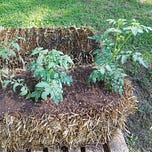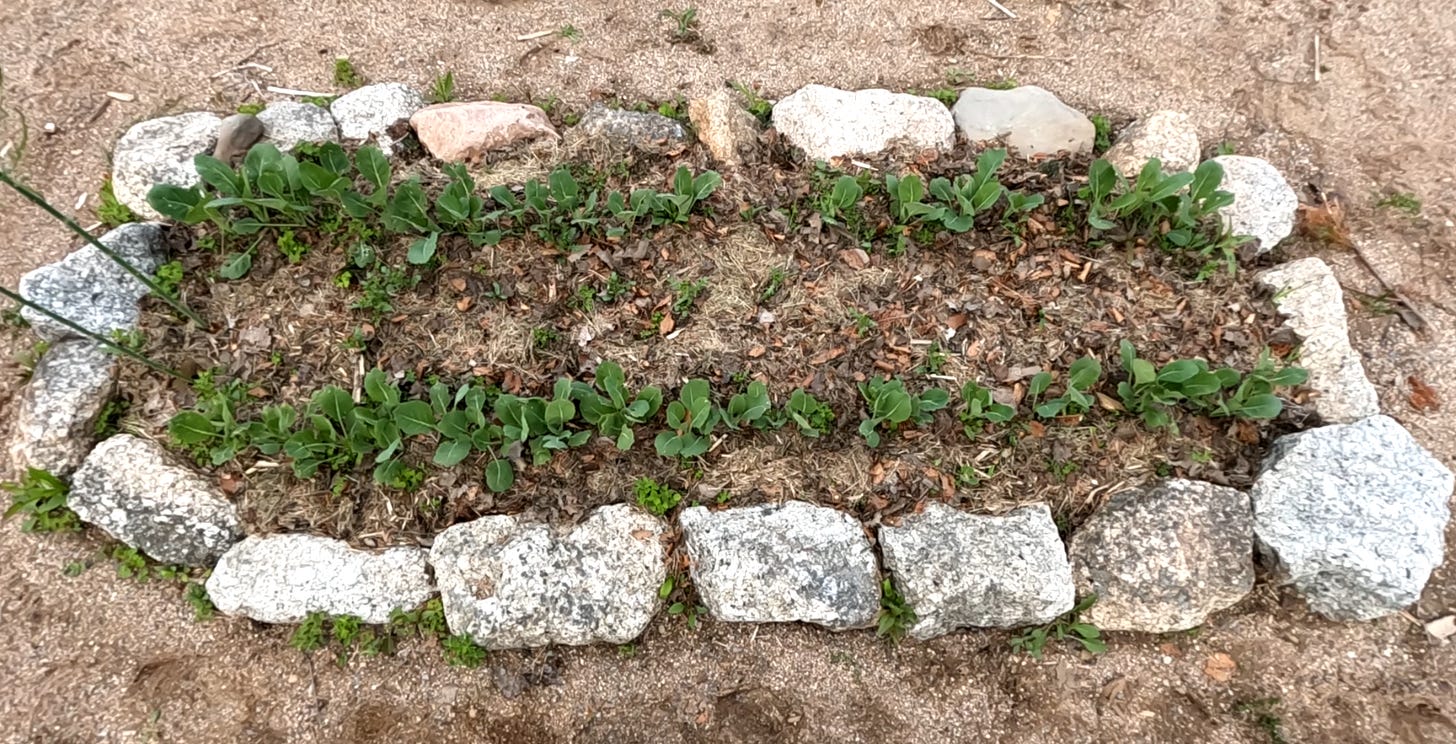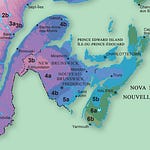There’s a popular new way to garden these days and it’s called “straw bale gardening”. It has it’s pros and cons, and some people love it, but what baffles me is that for some reason, this is considered by some to be an application of permaculture. In this article I intend to explain why straw bale gardening has almost nothing to do with permaculture, and by virtue of that premise, to show that it’s really not worth doing for most home gardeners seeking to grow as much food as they can with as little work and inputs as possible.

What is straw bale gardening?
There are plenty of good resources on the internet explaining how to do straw bale gardening, so I’ll keep this breakdown short. Here are the steps:
Get a bale of hay or straw and position it where you want it
Add fertilizer and soak it with water every day for about three days in a row
Continue the applications of water and fertilizer every couple days for nine more days
Put about 2-3 inches of potting soil on top of the bale
Plant something in the potting soil
Water as needed and fertilize about once a month.
Following the steps correctly is important, but when done right, straw bale gardening can yield great results, and is particularly useful for people with no soil, such as those gardening over concrete.
What is permaculture?
There are whole books written on permaculture, so for those who are well read on this topic, please forgive the terse summary that is about to follow, and also recognize that I am limiting the scope of this summary to permaculture as it applies to backyard gardening. With that having been said, I think a good way to understand permaculture is to think of it as a way of gardening that results in large amounts of energy being captured by desired plants, despite relatively low energy inputs on the part of the gardener.
A good analogy is pulling over on the side of the road to pick berries: this “berry garden” requires no work at all, but it yields up buckets of berries each year. In essence, all natural systems can be thought of as permaculture systems, so permaculture gardeners simply seek to make their vegetable gardens function like natural systems. In this sense, any garden that mimics natural systems and requires very few inputs (tilling, fertilizing, watering, work, pest control, etc.), while still giving up a decent yield, is a permaculture garden. The less inputs that are required by the gardener, the closer the garden is to an ideal permaculture design.
Why straw bale gardening is not permaculture
Let’s walk through the steps listed above to get a sense of the inputs required to obtain a yield from a straw bale garden.
Get a bale of hay or straw and position it where you want it
- Most backyard gardeners do not have a source of straw or hay, and even if they do, they would probably not go to the trouble of harvesting and baling the straw or hay only to make one or more of 18” by 36” gardens. This means that for every 18” by 36” gardening space a bale of straw must be bought - and these can cost anywhere from $5 a piece upwards, which represents the value associated with the energy that was required to harvest, bale and transport them. For those driving out of town to pick them up, there’s an additional energy cost. That’s an energy input.Add fertilizer and soak it with water every day for about three days in a row
- Using synthetic fertilizer is about as far from permaculture as one can get, but even if something like bloodmeal is used, it’s not like bloodmeal falls from the sky - an animal must be killed, it’s blood must be collected, and then it must be dried and converted to meal, then packaged and transported. This also carries an energy cost - as does the manufacturing of synthetic fertilizers. Also, the watering requirement is another energy input - the gardener has to do the work and source the water.Continue the applications of water and fertilizer every couple days for nine more days
- More work, more fertilizer, more energy inputs required on the part of the gardener. Man - when does this get easy?Put about 2-3 inches of potting soil on top of the bale
- Now the gardener needs to buy potting soil, which is gathered, packaged and transported from somewhere else. All of these actions require energy inputs, and even if the gardener is simply buying the bag of soil at the corner store, the energy inputs are implied in the cost; that is to say, the gardener is paying for the oil/energy that was required for the producer of the soil to gather, package and transport the soil.Plant something in the potting soil
- Finally, at long last - a step that is 100% in keeping with permaculture principles.Water as needed and fertilize about once a month.
- I spoke too soon. Now we’re back to watering and fertilizing. This is not a garden that behaves like a natural system. The bale of hay is breaking down and providing some nutrients to the plants while this is all happening, but since straw needs nitrogen to break down, the gardener needs to keep adding fertilizer to maintain that process, and continual watering is needed because straw does not behave like soil in terms of its ability to hang on to water.

High maintenance
In my terse explanation of permaculture I made it clear that permaculture gardens are low maintenance by design, and that the gardeners who employ permaculture are always seeking better design choices to improve upon that feature. The analysis above reveals that straw bale gardens are quite far from that ideal. The 1st 12 days require constant watering and applications of nitrogen. Soil needs to be added for them to work. Once plants are growing there is a continued need for applications of fertilizer, and watering - and it is well referenced in the literature on the topic that daily watering may be required during hot times of the year. All of this is contrary to even the most basic permaculture design such as mulched beds.
Not as green as it seems
A foundational ethic of the permaculture approach is “care of the earth”, and this speaks to gardeners doing their best to make choices that eliminate or at least minimize any negative impacts that their gardening activities might have on on the planet’s ecosystems as a whole. In fact, the gardener aspires to achieve a net benefit, such that the world is a better place as a result of the gardener’s activities. When considering the overall carbon footprint associated with straw bale gardening, it’s hard to see it as achieving a net good. I’m sure there are situations where it is, such as a scenario where there is a farmer that has a surplus of hay, and provides it to urban gardeners that are trying to grow food over concrete - thereby achieving a carbon capture in the urban setting that would not other wise have occurred - but I doubt this is the norm. Instead, it’s likely that most backyard gardeners that try straw bale gardening drive to a place where they can buy bales of straw, then drive to a place to buy fertilizer and potting soil, then go home and water the heck out of it all season long. As outlined in the analysis above, all of this has an implicit carbon footprint, and it is doubtful that the carbon capture achieved by plants growing in straw bale gardens is anywhere near sufficient to offset the carbon footprint that results from their design.
Final thoughts
It’s hard to understand why straw bale gardens are considered by some to be permaculture gardens, since almost no part of their design aligns with a permaculture approach to gardening. In fact, it’s arguable that they have more in common with hydroponic gardening than any other approach, since water and fertilizers need to be applied on a continual basis to keep them working. With that having been said, it’s important to note that the purpose of this article was not to argue that straw bale gardens will not work, or even that they are not a good idea for the home gardener. In fact, I think straw bale gardens are a fine idea for gardeners with no soil, or for new gardeners that want a raised bed that’s relatively quick and inexpensive to set up. They are also good for turning lawn spaces into garden spaces because any piece of lawn will be killed and composted over the course of the growing season while underneath a straw bale garden, and by virtue of that process, will be ready for planting in the following year, AND what’s left of the bale can be used as mulch… but perhaps that’s a good topic for another article…














Share this post